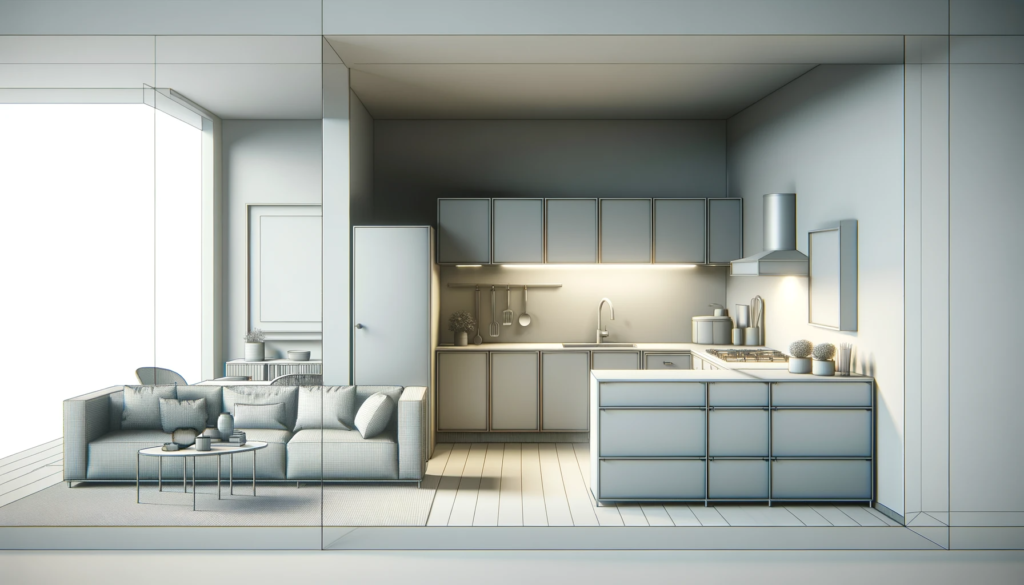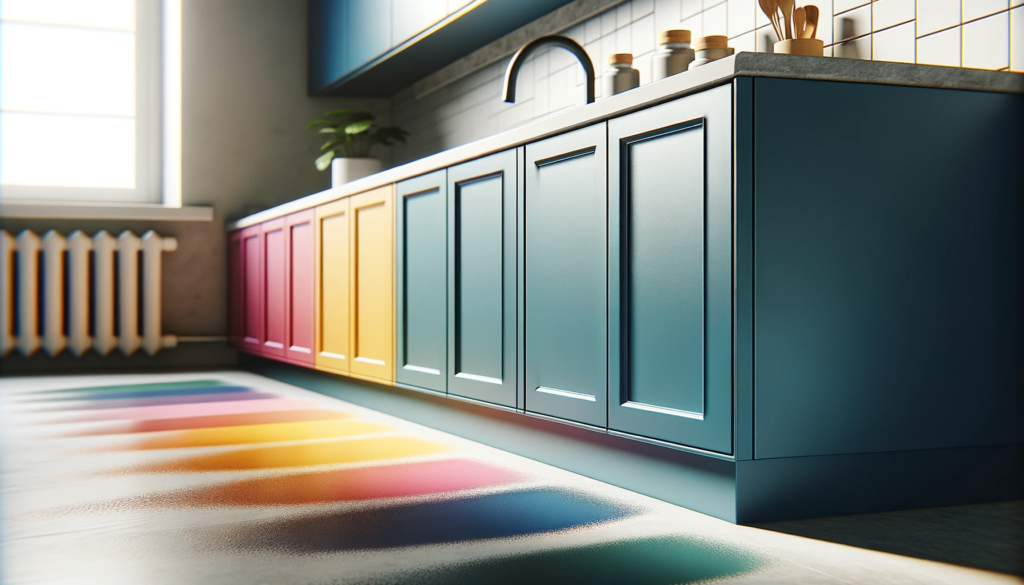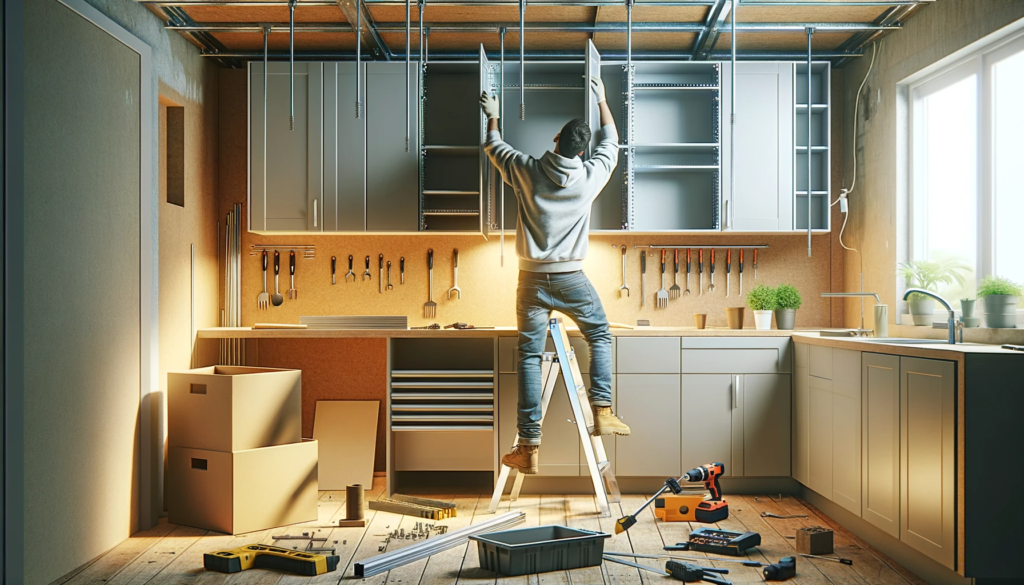Thinking of sprucing up your kitchen with something both stylish and sturdy? Consider metal kitchen cabinets. Made from materials like stainless steel, aluminum, and even powder-coated steel, they’re not just durable; they bring a cool, contemporary flair to your kitchen space. These cabinets are tough cookies, standing up well against moisture, heat, and even those annoying pests.
Now, for the practical side: they’re a breeze to clean, which is a huge plus if your kitchen is always bustling. And the best part? You can get them in a variety of designs, custom-tailored to fit your kitchen’s layout and your personal style. For those who are mindful about the environment, you’ll be happy to know that these cabinets are eco-friendly and recyclable. They’re a choice that feels good for your home and the planet.

Why Choose Metal Kitchen Cabinets?
Exceptional Durability
Metal kitchen cabinets are renowned for their exceptional durability. Unlike wood, they don’t warp or succumb to humidity and temperature changes, ensuring they maintain their shape and functionality over time. This makes them a wise choice for climates that experience varied weather conditions or for kitchens where heavy use is expected.
Low Maintenance and Hygiene
The ease of maintenance with metal cabinets is a significant advantage. They resist stains and spills, and can be easily wiped clean without the need for special cleaners. This aspect not only makes them low maintenance but also hygienic, as their non-porous surfaces prevent bacteria and mold growth.
Modern Aesthetic Appeal
Metal kitchen cabinets offer a sleek and modern aesthetic that can transform any kitchen into a contemporary space. Their clean lines and minimalist design provide a sophisticated backdrop that complements various interior styles. Additionally, they can be painted or finished in numerous ways to match any color scheme or design preference.
Customization and Variety
The versatility in customization is a key benefit of metal kitchen cabinets. They come in a wide range of styles, from satin to semi-gloss finishes, offering endless possibilities to tailor your kitchen’s look. This flexibility allows homeowners to achieve a unique kitchen design that reflects their personal taste and style.
Eco-Friendly and Sustainable
Metal kitchen cabinets are an eco-friendly choice for sustainable home design. Many are made from recycled materials and are fully recyclable at the end of their lifespan, reducing the environmental impact. Furthermore, their longevity means less frequent replacements, contributing to reduced waste and resource consumption over time.
Types of Metal Kitchen Cabinets
Stainless Steel Cabinets
These are the epitome of modern kitchen design. Stainless steel cabinets are highly sought after for their sleek look and exceptional durability. Resistant to rust and corrosion, they’re ideal for kitchens in humid climates or for those who love a professional, restaurant-grade feel in their cooking space.
Aluminum Cabinets
Lightweight yet sturdy, aluminum cabinets are a fantastic option for a contemporary kitchen. They’re resistant to corrosion and are an excellent choice for those seeking a minimalistic yet futuristic aesthetic. An added bonus is their eco-friendly nature, as aluminum is easily recyclable.
Powder-Coated Steel Cabinets
For those who love color in their kitchen, powder-coated steel cabinets are the way to go. The powder coating process not only adds a vibrant touch but also provides an extra layer of protection against scratches and dings. These cabinets are perfect for creating a bold statement in your kitchen.
Galvanized Metal Cabinets
Known for their rustic yet industrial appeal, galvanized metal cabinets are unique and trendy. They’re coated with a layer of zinc to prevent rust, which gives them a distinctive look that can blend well with both industrial and farmhouse-style kitchens. These cabinets are for those who want a kitchen with character and a story to tell.

Instalation Tips When Adding Metal Kitchen Cabinets
Proper Measurement and Alignment
Before installation, it’s crucial to measure your kitchen space accurately. Metal cabinets, unlike some wooden ones, don’t easily lend themselves to onsite modifications. Make sure to account for the size of the cabinets, leaving appropriate space for appliances and ensuring that doors and drawers can open freely. Using a level during installation is key to ensure that the cabinets are perfectly aligned and even, preventing issues with door alignment or uneven shelves.
Weight and Secure Mounting
Metal kitchen cabinets can be heavier than traditional wooden ones. Ensure that your walls are capable of supporting this weight. It may be necessary to reinforce the wall or use special heavy-duty mounting brackets and screws. This is especially important in older homes where wall studs may not be as robust. Additionally, use appropriate anchors or fasteners for your specific wall type, be it drywall, plaster, or something else.
Electrical and Plumbing Configurations
If your metal cabinets will be installed near electrical outlets, appliances, or plumbing, plan the layout carefully. Metal conducts electricity, so it’s important to avoid any potential hazards by ensuring that there’s no contact with electrical wiring or outlets. For cabinets installed near sinks or dishwashers, be mindful of the plumbing setup and leave adequate space for pipes and connections. Consulting with a professional electrician or plumber before installation can prevent costly and dangerous mistakes.

Cost Considerations
When planning to install metal kitchen cabinets, it’s essential to consider the financial aspect. Generally, the cost can vary significantly based on factors like the type of metal, design complexity, and the degree of customization required. Stainless steel cabinets, known for their durability and professional appearance, typically sit at the higher end of the price spectrum. Aluminum and powder-coated options might offer a more budget-friendly alternative while still providing a sleek, modern look.
Custom designs and additional features like specialized finishes or unique sizes can add to the cost. It’s also important to factor in installation expenses, especially if your kitchen requires structural alterations or professional assistance to handle the weight and specific requirements of metal cabinetry.
To manage costs effectively, compare quotes from different suppliers and consider which features are must-haves versus nice-to-haves. Remember, while metal cabinets can be an investment, their longevity and low maintenance can offer cost savings in the long run.